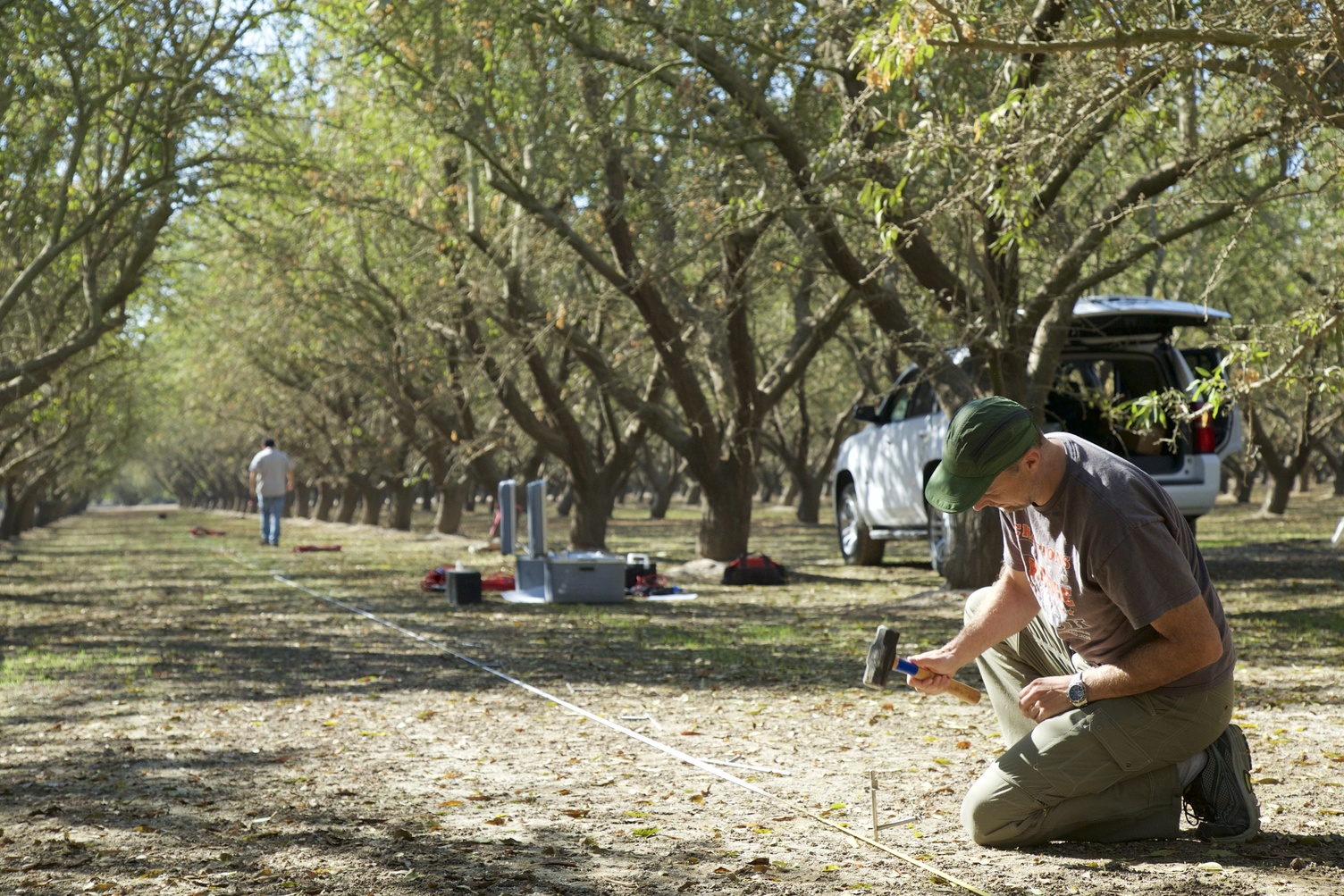In late June, Almond Board of California (ABC) President and CEO Richard Waycott attended the Forbes AgTech Summit. At the summit, leaders in agriculture and technology came together to discuss opportunities and challenges at the nexus of those two industries.
A commitment to innovation has propelled almonds to become California’s second largest agricultural crop,1 generating more than $11 billion of economic activity for the state and supporting 104,000 jobs statewide.2
Underpinning that growth is that over the past 40 years, ABC has invested $60 million in research that has led to the ongoing adoption of innovative and efficient farming practices. And with the California Almond community committed to continuous improvement, it is now driving the agenda for sustainable agriculture for the next 40 years and beyond.
 Groundwater recharge researchers from Lawrence Berkeley National Laboratory in action at an almond orchard in Modesto, CA.
Groundwater recharge researchers from Lawrence Berkeley National Laboratory in action at an almond orchard in Modesto, CA.
Some of the recent innovations ABC and the almond community are working to develop include:
- Alternative uses for almond coproducts, which could benefit food, automotive, pharmaceuticals and plastics, contributing to California's growing bioeconomy and moving the almond community toward zero waste.
- Trials to reuse the woody tree material produced by the removal of old orchards. Known as whole orchard recycling, this technique grinds up entire almond orchards at the end of their mature life, incorporating each tree back into the soil which can return valuable nutrients to the soil ecosystem, increase water infiltration and water holding capacity, and slow the rate at which carbon dioxide is released into the atmosphere.
- Research on managed on-farm groundwater recharge where preliminary analysis indicates that 675,000 acres of California Almonds are moderately good or better in their ability to recharge groundwater based on soil and subsoil characteristics.3
“In growing one of California’s largest acreage and most valuable crops, we have the ability to work together as a community of 6,800 almond farmers to drive the agriculture industry forward through innovative initiatives,” says Waycott. “Each component of almond farming – from land preparation and varietal development to equipment and processing – will be considered for improvements in technology, efficiency, and sustainability. Coming together as a community at events like the Forbes AgTech Summit allow us to learn from each other and source inspiration for continued innovation in California agriculture.”
Watch this short video highlighting a variety of Almond Board research partners and projects to learn more about the almond community’s innovative research:
1National Agricultural Statistics Service, NASS, 2014.
2University of California Agricultural Issues Center. The Economic Impacts of the California Almond Industry. December 2014.
3Land IQ. Groundwater Recharge Suitability Analysis. November 2015.